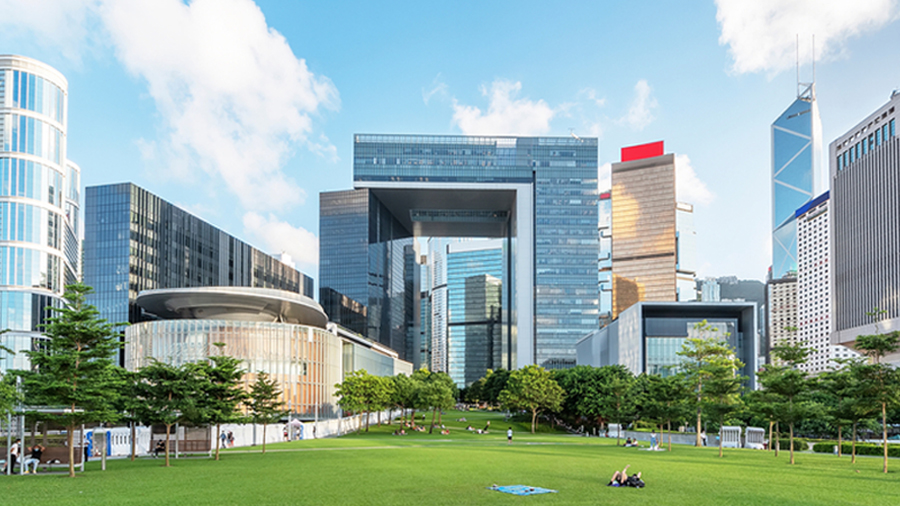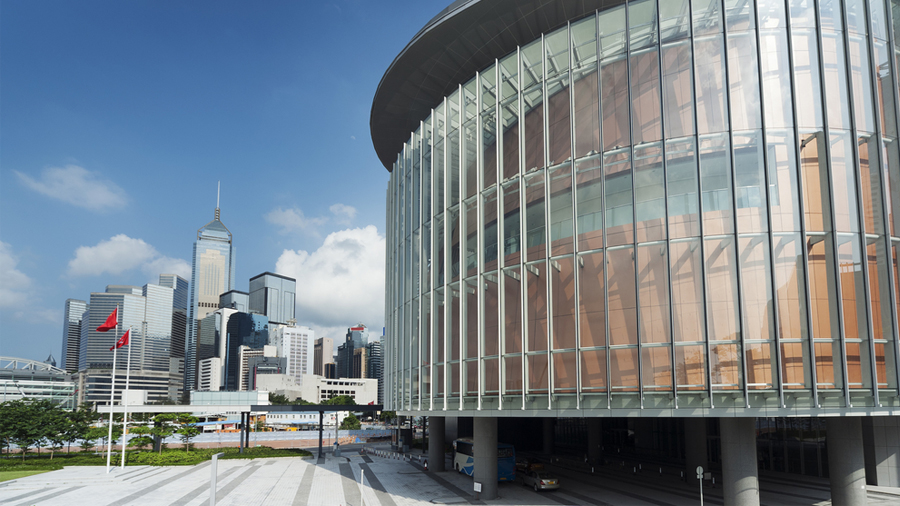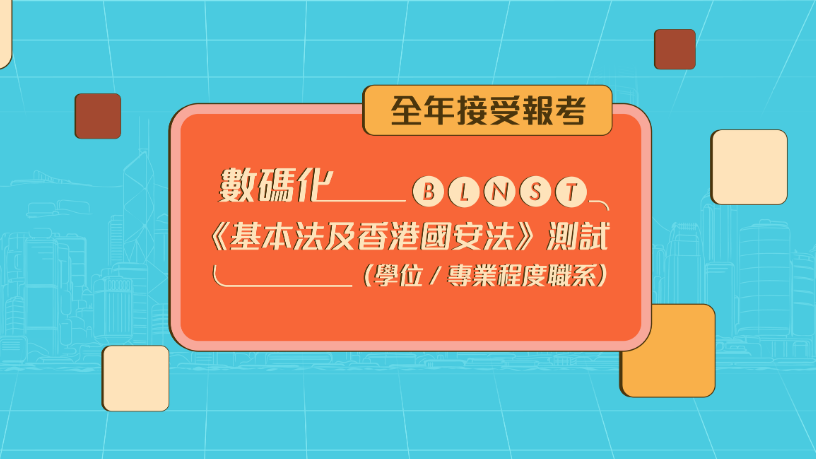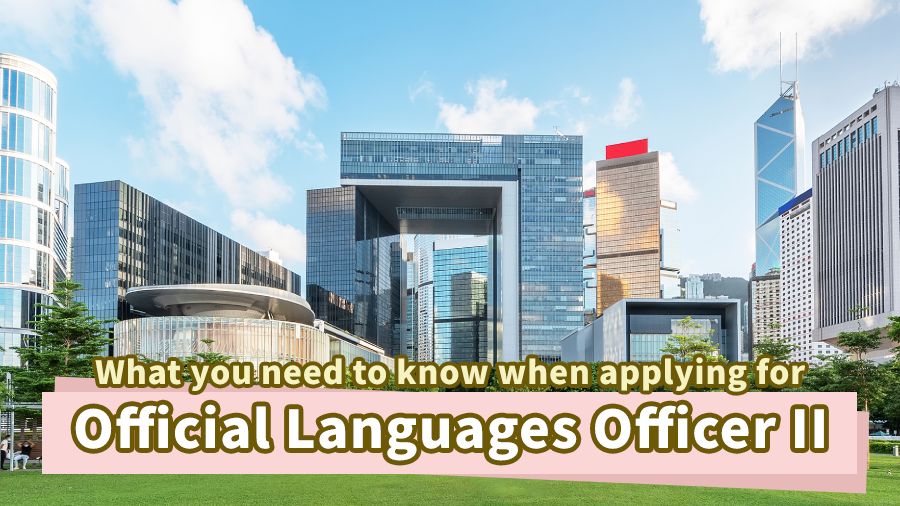Tertiary Students
Government Jobs

What you need to know when applying for EO II (Executive Officer II)
Roles and DutiesExecutive Officers are professional managers who specialise in resource and system management. Posted around different government policy bureaux and departments, they enjoy a wide variety of work and have the opportunity to work with people of different backgrounds. They will be provided with structured training at various stages of their career to develop them into professional resource and system managers.The Government looks for quality people with leadership potential and commitment. Executive Officers should have good analytical ability and judgment, as well as good interpersonal and communication skills. They should also be versatile and innovative. Above all, we look for talents who share the Grade's vision to serve Hong Kong by providing the highest quality of service in the management of public organisations.2025-26 Recruitment Exercise Timeline - Application Period for the Executive Officer II (EOII) Post -> Begins in mid-September 2025- Joint Administrative Officer / Executive Officer / Labour Officer / Trade Officer / Management Services Officer Recruitment Examination (JRE) -> 29 November 2025 (tentative)- Selection Interview -> February to April/May 2026 (tentative)- Earliest Batch of Offers of Appointments (subject to clearance of all recruitment formalities) -> May/June 2026 (tentative)*The above information on timeline is for reference only.Entry Requirementsa. a bachelor's degree from a university in Hong Kong, or equivalent; andb. a Pass result in the Aptitude Test in the Common Recruitment Examination (CRE); andc. a good command of both Chinese and English and have met the language proficiency requirements of "Level 2" results in the two language papers (Use of Chinese and Use of English) in the CRE (or equivalent results); andd. a Pass result in the Basic Law and National Security Law Test (Degree / Professional Grades).Remuneration Package1. Starting Salary: The entry pay for an Executive Officer II is Master Pay Scale Point 15 which is at present HK$35,080 per month2. Annual Vacation Leave: Annual vacation leave of 18 days per year3. Fringe Benefits - medical and dental benefits; housing benefitsFor more details, please visit the website of Civil Service Bureau.Applicants could watch the video below for better preparation of the interview.(The video is broadcasted in Cantonese)

What you need to know when applying for AO (Administrative Officer)
Roles and DutiesAOs take up different positions in bureaux and departments, as well as district, Mainland and overseas offices in the Government at regular intervals. Through regular rotation of jobs, AOs receive wide exposure and acquire expertise in different policy areas, as well as develop multi-skills and accumulate rich experience in public administration. Not only are they required to possess a good understanding of their respective policy areas, they should also be alert and sensitive in listening to the views of different stakeholders and members of the public so that they are able to approach policy work with the overall public interest in mind. In formulating policies that contribute to the long-term development and benefits of Hong Kong, AOs also work closely with members of professional grades both within and outside the Government (such as various regulatory authorities and statutory bodies).Annual Recruitment Timeline *The information below is FOR REFERENCE ONLY. The actual periods and details of events will be announced nearer the events. You are advised to refer to the announcements made by then.>>Beginning of Recruitment CycleEnd of Recruitment Cycle

Digitalised Basic Law and National Security Law Test (Degree / Professional Grades)
The Civil Service Bureau (CSB) launches Digitalised BLNST in May 2025 for prospective applicants for civil service jobs requiring degree or professional qualifications to take the Basic Law and National Security Law Test (BLNST) (Degree / Professional Grades) at their own selected timeslots throughout the year. In view of the launch of Digitalised BLNST, with effect from June 2025, the CSB will no longer organise the paper-based BLNST on the same day of the Common Recruitment Examination (CRE) in Hong Kong. The examination format, duration and content of Digitalised BLNST are identical to those of the paper-based BLNST. The only change is that the test would be conducted by computer and the results of Digitalised BLNST will be issued by e-mail to the candidates in the form of electronic result certificates on the same day as the examination.。Examination ScheduleDigitalised BLNST is conducted from Monday to Friday (except public holidays) at the Recruitment Centre, General Grades Office (Address: 37th Floor, Revenue Tower, 5 Gloucester Road, Wanchai, Hong Kong). There are six examination timeslots per day. Limited quotas will be available on a first-come, first-served basis. Applicants can choose the timeslot for Digitalised BLNST to be conducted in the coming 8 weeks from the day of application. The earliest date that can be selected is the next working day. Suspension PeriodDigitalised BLNST has a three-month suspension period. If an applicant is absent from the examination or has not attained a pass result in the examination, he / she can only take Digitalised BLNST again three months after the date of absence or the date of failing the examination.How to applyApplicants must submit the application through Digitalised BLNST online application system. Upon completion of application procedures, applicant will be provided with an application reference number immediately. A confirmation e-mail will also be sent to the applicant’s e-mail address.For more details, please visit the webpage for the Digitalised Basic Law and National Security Law Test (Degree / Professional Grades).For details about the BLNST (Degree / Professional Grades) including the examination format and sample questions, and the BLNST in the civil service recruitment, please refer to the Common Recruitment Examination and the Basic Law and National Security Law Test (Degree / Professional Grades) webpage.Source: Civil Service Bureau

What you need to know when applying for OLO II (Official Languages Officer II)
Roles and Duties of Official Languages OfficersOfficial Languages Officers are mainly deployed on the following types of duties in bureaux and departments:- translating Chinese into English and vice versa;- interpreting in English/Cantonese/Putonghua at boards, committees, meetings and interviews;- attending meetings for the purpose of producing minutes in Chinese and English;- providing language-related support services such as drafting and vetting documents in Chinese and English, and advising on the use of the two official languages; and- assisting in office management work.
Entry Requirements1. a bachelor's degree from a university in Hong Kong, or equivalent; 2. attained Level 2 results in the two language papers (Use of Chinese and Use of English) in the Common Recruitment Examination (CRE), or equivalent; and3. a Pass result in the Basic Law and National Security Law Test (BLNST) (Degree / Professional Grades). (Remarks: Applicants will be required to pass the Official Languages Officer Written Examination)
Official Languages Officer Written Examination (OLOWE)Eligible applicants will be invited to sit for the OLOWE. The OLOWE includes papers on Practical Writing (Chinese and English) and Translation (Chinese to English and vice versa). Applicants who pass the OLOWE will be selected for interpretation test and interview based on their results in the OLOWE. Those who are not selected for interpretation test and interview will be notified in writing in eight to ten weeks after the examination. As it takes time to process all applications, an invitation to the OLOWE does not imply that an applicant's qualifications meet the entry requirements.
Tips for Taking the OLOWE*
攻略1︰平日根基要打穩
攻略2︰應試答題勿慌忙
攻略3︰筆試前夕準備清單
Tips for Taking the Interpretation Test and Interview*
*Source: Civil Service Bureau Facebook; Chinese only
Remuneration Package1. Starting Salary: Master Pay Scale Point 14, which is at present HK$32,430 per month2. Annual Vacation Leave: 18 days per year3. Fringe Benefits: medical and dental benefits; housing benefitsFor more details, please visit the website of Civil Service Bureau.

What you need to know when applying for MSO II (Management Services Officer II)
Roles and DutiesAs management consultants, Management Services Officers (MSOs) help policy bureaux and departments find opportunities for improvement, facilitate and implement changes, accelerate innovation and technology adoption, and promote cross-sector collaboration for better services. Types of consultancies include business process re-engineering, departmental management reviews, organisational reviews, performance management, design thinking, knowledge management, shared services, public sector innovation, information technology application studies, streamlining of government services and reviews on business facilitation as well as market and financial analysis. Management Services Officers may be required to assist in managing operations of direct public service channels / platforms to provide one-stop services and support implementation of innovative programmes. They may be posted to work in different policy bureaux and departments.Deployment of MSOsMSOs may be posted to work in different policy bureaux and departmental units. They work in close partnership with colleagues of different grades in providing service in the areas of general consulting, resource management and other specialised fields.Entry Requirements1. a bachelor's degree from a university in Hong Kong, or equivalent; and2. a Pass result in the Aptitude Test paper in the Common Recruitment Examination (CRE); and3. a good command of both Chinese and English and have met the language proficiency requirements of Level 2 in the two language papers (Use of Chinese and Use of English) in the CRE, or equivalent; and4. a Pass result in the Basic Law and National Security Law Test (Degree / Professional Grades) (BLNST). Remuneration Package1. Starting Salary: The entry pay for an Management Services Officer II is Master Pay Scale Point 14 which is at present HK$33,405 per month2. Annual Vacation Leave: Annual vacation leave of 18 days per year3. Fringe Benefits: Medical and dental benefits; housing benefitsFor more details, please visit the webpages of Digital Policy Office and Civil Service Bureau.
More Information
Opportunities in the Greater Bay Area

粵港澳大灣區創業大賽複賽火熱開啓 資源精準對接 賦能大灣區創業生態 (Chinese only)
(The story is in Chinese only. Please refer to the Chinese version.)

Greater Bay Area Youth Employment Scheme
The Greater Bay Area Youth Employment Scheme (the Scheme) offers you an opportunity to broaden your horizon and explore a new career pathway in the Mainland cities of the Greater Bay Area (GBA)!The Government launched the pilot Scheme in 2021 and gained very favourable feedback from both the participating enterprises and young persons. To foster career development of young persons and the exchange of talents in the GBA, the Labour Department launched the regularised Scheme since 2023 to encourage enterprises to engage Hong Kong young persons to work in the Mainland cities of GBA. To strengthen support for youth employment, enhancement measures are introduced under the Scheme since January 2025.Eligibility criteria for young persons are relaxed to allow legally employable Hong Kong residents aged 29 or below with educational attainments awarded by higher education institutions within or outside Hong Kong at sub-degree level or above to join the Scheme.Enterprises with businesses in both Hong Kong and the Mainland cities of GBA to employ Hong Kong young persons in accordance with Hong Kong Laws and station them in the Mainland cities of GBA to work and receive on-the-job training may apply for allowance from the HKSAR Government of 60% of the young persons' monthly salaries with the limit increased to HK$12,000 per month for up to 18 months. Enterprises must offer a monthly wages of no less than HK$18,000 for young persons holding bachelor's degrees or above and offer salaries at a level comparable with the market rate for young persons with sub-degree qualifications.The HKSAR Government has implemented the "Greater Bay Area Youth Employment Scheme - Arrangements for Mainland Youth to Work in Hong Kong" (the Arrangements) since 2025. Enterprises which have participated in the Scheme and employed Hong Kong young persons to work in the GBA Mainland cities may apply for the same number of Mainland young persons to work in Hong Kong according to relevant requirements under the Arrangements, so as to foster the exchange of talents in GBA.Eligible young persons can visit the Scheme website for job vacanciesKick-off Ceremony, experience-sharing by participating young people and enterprises (Chinese videos with Chinese and English subtitles)

The 2025 Guangdong-Hong Kong-Macau Greater Bay Area Entrepreneurship Competition (Chinese only)
(The story is in Chinese only. Please refer to the Chinese version.)
More Information
Exchange and Internship
.png)
HYAB Youth Start-up Internship Programme 2025 offers 200 Internship Positions
The Home and Youth Affairs Bureau partners with the Hong Kong Cyberport Management Company Limited (Cyberport) and Hong Kong Science and Technology Parks Corporation (HKSTP) to launch the HYAB Youth Start-up Internship Programme 2025, with a view to providing young people with internship opportunities at local start-ups and fostering their interest in pursuing a career in innovation and technology. In addition, the Programme also aims to help start-ups nurture talents and drive the development of the local innovation and technology related industries.Key FeaturesThe Programme offers 200 internship positions in total across various disciplines, such as data analysis, fintech, biotechnology, artificial intelligence applications, business development, marketing and design. Participating companies may engage interns in full-time, part-time or mixed mode. Each internship position will be entitled to a salary subsidy up to HK$11,200 per month provided by the HYAB.Participating students will be able to:.apply acquired knowledge to gain work experience;.develop and sharpen their specialised and transferable skills through participating in a series of training and entrepreneurship activities provided by Cyberport and HKSTP;.get an opportunity to visit start-ups in the Mainland cities of the Greater Bay Area to learn about the entrepreneurial ecosystem there;.gain a career head start in the innovation and technology related industries; and.build network with professionals and leaders in the start-up community.Eligibility.Aged between 18 and 30;(i) a full time post-secondary student (including sub-degree, undergraduate, or postgraduate) holding a Hong Kong Permanent Identity Card; or(ii) a local full-time post-secondary student (including sub-degree, undergraduate, or postgraduate) holding a Hong Kong Identity Card.Internship Period3 to 6 monthsApplication and EnquiriesFor more information, please visit the webpages of Cyberport and HKSTP.

[Interns' Sharing] United Nations Volunteers - Hong Kong Universities Volunteer Internship Programme
With a view to furthering youth volunteerism, the United Nations Volunteers - Hong Kong Universities Volunteer Internship Programme funded by the Home and Youth Affairs Bureau has been launched by Agency for Volunteer Service with support from Hong Kong Volunteers Association and Peace and Development Foundation. It allows local university undergraduates to participate in a 6-month volunteer internship under the United Nations (UN) Youth Volunteer modality serving under UN field units or agencies in oversea. For programme details, please click here to visit another story.
Interested in joining the programme? Videos on programme introduction and interns' sharing are as follows for you to know more!
Programme Introduction
Interns' Sharing
More Information
Hiking
.jpg)
A Deep Dive into Nature @ Long Valley Nature Park
Located at Kwu Tung North, the Long Valley Nature Park is a new facility integrating wetland conservation, farming operation and nature education in one place. The large piece of fresh water wetland at Long Valley has been composed of a mosaic of wet and dry farmland, marshes, water ponds, water channels, etc. Through habitat management and eco-friendly farming practice, Long Valley provides home for diverse wildlife and has now become great choice for a vacation getaway!Visitor FacilitiesLong Valley Nature Park is about 37 hectares. It is divided into three management zones, namely the Visitor Zone, Agriculture Zone and Biodiversity Zone. The 5-hectare Visitor Zone is designed for visitors and education experience. There are visitor facilities such as Birding Hut for bird watching as well as Wetland Square Long Valley Plaza for activities and events.The Long Valley Nature Centre is on the other side of the Sheung Yue River and connected with the Visitor Zone by a foot bridge. It provides an indoor area for workshops, exhibition and interactive games.Remember to check the website for the latest updates on upcomming activities and events, and plan your visit to Long Valley Nature Park for a deep dive into nature!
For details on visits and activity information, please visit the website of Long Valley Nature Park.
For details on visits and activity information, please visit the website of Long Valley Nature Park.

Hiking Skills that You Need to Know
Hiking is a physical activity with both physical and mental benefits. It can improve your physical fitness and help you relax. You may need different skills for any particular sport, and each sport, including hiking, has its own unique skills. If you can master the skills of hiking, you can reduce energy loss and minimise the chance of getting hurt. Here are some hiking tips by Enjoy Hiking: BasicsWalk with the entire soles of your boots touching the ground, to spread the load evenly across your feet.Free your hands or hold a walking stick to assist balance.Maintain a steady and natural pace, and one that suits you.Breathe smoothly, steadily and in rhythm with your pace.Avoid running or jogging.Avoid excessive conversation, which may affect your breathing rhythm and concentration.Concentrate and always look where you tread. Be observant and vigilant to what is lying aheadTo avoid accidents, always stop walking when you read your map.When moving forward, keep an adequate distance from other hikersHiking ProgrammePlan to end your hike two hours before sunset.Use the Naismith Law to estimate the time required for your hike. According to this law, a fit adult can cover 5 km of level ground per hour, and an extra hour should be added for every 600 m of uphill hiking. For hiking in Hong Kong, it is best to base on an hourly rate of 4 km for level ground, and an extra hour for every 500 m of uphill hiking.Select a gentle slope to go uphill. Avoid challenging yourself with a very steep or treacherous route right at the beginning.The party's entire load should be distributed among all members of the group, taking into account the strength of each member.UphillMaintain a natural pace and avoid making very large strides.Avoid climbing at high speed. Don't rest too frequently or for too long. When you feel tired, reduce your speed instead of stopping.Tread only on secure stable ground, where there is enough foot room.Use the strength of your legs to climb. Avoid pulling yourself up by grasping small trees or branches, as they may break leading to a fall.Keep your upper body straight.When going up very steep slopes, don't go straight ahead. Move sideways and work your up in a series of zigzags. DownhillNever run downhill ―this is a certain way to have a dangerous fall.Tread only on secure stable ground, with enough foot room.Avoid treading on wet slippery ground, especially wet clay or grasses. But if there is no other way, proceed with caution and keep your body low.Use the strength of your legs to descend. Avoid sliding down by grasping small trees or branches. This indicates you are half out of control. Branches can break and, even if they don't, you will damage the vegetation.Keep your upper body straight.When moving down very steep slopes, move sideways and work down in a series of zigzags. Food and DrinkNever eat or drink while moving.Relax to take refreshments. Don't hurry your food or drink.Never drink untreated water from hill streams or eat any wild plants or mushrooms.Don't consume icy drinks immediately after a long hike, when your body temperature is still high.Never drink alcohol during a hike. Foot CareWear suitable hiking shoes. Wear new shoes on level ground a few times before going on a serious hike. This will ensure the surface material is soft and the shoes are comfortably worn in to the shape of your feet. Bootlaces should not be too tight.Wear two pairs of socks made of soft, fluffy and absorbent material.Trim your toenails, and try to keep your feet clean and dry. Stop walking if your feet are uncomfortable. Inspect them and treat any wounds promptly.If there are signs of blisters, put a plaster on the affected area.Blisters should be dressed with an absorbent plaster that eliminates moisture.Serious blisters should be treated with antiseptic. Pierce the blisters with a sterile pin and squeeze out any moisture. Avoid touching the wounds directly, and cover them with an antiseptic dressing right away.For soreness or cramps in the legs, massage the leg muscles. If possible, soak feet in warm water, or use a menthol-based heat rub ointment. Moreover, to be well prepared for your next hiking trip, you may check out the following websites for more information!Leisure and Cultural Services Department - Hiking Scheme - Safety Hints on HikingCentre for Health Protection - A Guide for Hikers Source: Agriculture, Fisheries and Conservation Department Enjoy Hiking website

[New Hiking Routes] Robin's Nest Country Park
The 25th country park in Hong Kong - The Robin's Nest Country Park has been established!Country Park's Overview The Robin's Nest Country Park, occupying an area of about 530 hectares at Sha Tau Kok in Northeastern New Territories, lies on a continuum of mountain ridges stretching from the Shenzhen Wutong Mountain Scenic Area to the north and Pat Sin Leng Country Park to the south. Natural habitats in the park remain untouched due to its remoteness at the border.The Robin's Nest Country Park is characterised by the rich floral and faunal diversity, including various species of conservation interest. The abandoned Lin Ma Hang Lead Mine in the park supports one of the most important bat colonies in Hong Kong and was designated as a Site of Special Scientific Interest. Part of the Robin's Nest Country Park falls within the former Frontier Closed Area and harbors a diverse collection of war relics. Lin Ma Hang Lead Mine was one of the most extensive mining systems in Hong Kong's mining history. Together with the MacIntosh Forts, Grade-2 historic buildings, they are the key heritage resources in the Robin's Nest Country Park.Hiking TrailsThere are two hiking trails in the Robin's Nest Country Park, namely Robin's Nest Country Trail and Lin Ma Hang Country Trail. Information boards, waymarks and distance posts are installed along the trails. Viewing points and interpretation panels are also set up at suitable locations to facilitate appreciation of nature and cultural heritages.Transportation InformationTo the start point of Robin's Nest Country TrailTake public transport to Tam Shui Hang Bus Station at Sha Tau Kok Road – Shek Chung Au, and walk along Shan Tsui Village Road for about 30mins to the start point of Robin’s Nest Country Trail.Green Minibus route – 55KKowloon Motor Bus (KMB) routes – 78KTo the start point of Lin Ma Hang Country TrailTake minibus at Sheung Shui Station and get off at Lin Ma Hang Road before the Frontier Closed Area. Walk along the connecting path for 20mins to arrive at the Lin Ma Hang Village.Green Minibus route – 59K (Please take the one towards Lin Ma Hang at Sheung Shui MTR Station)Please note a section of Lin Ma Hang Road near Lin Ma Hang Village is within the Frontier Closed Area (FCA). Visitors to/from Lin Ma Hang Village who wish to take minibus route 59K are required to possess a valid Frontier Closed Area Permit, or they have to get on or off before the FCA and use the connecting path to hike to Lin Ma Hang Village. Hikers should take note of the waymarks onsite. Please refer to the webpages on Closed Area Permit and the New FCA Boundary of the Hong Kong Police Force for information on access to FCA. (Video in Chinese only)For more details of the Robin's Nest Country Park, please visit the website of the Agriculture, Fisheries and Conservation Department.
More Information
Useful Links
- Sir Edward Youde Memorial Fellowships (for Postgraduate Research Students)
- Multi-faceted Excellence Scholarship
- Other Scholarships, Grants & Loans Schemes
- Non-means-tested Loan Scheme for Full-time Tertiary Students
- Sir Edward Youde Memorial Fellowship / Scholarship for Disabled Students
- Grantham Scholarships Fund - Grantham Maintenance Grants
- Student Travel Subsidy for Tertiary or Post-secondary Students
- Student Travel Subsidy for Tertiary or Post-secondary Students
- Scholarship for Prospective English Teachers
- Hong Kong Rotary Club Students' Loan Fund
- Education Scholarships Fund
- Hong Kong Scholarship for Excellence Scheme
- Agricultural Products Scholarship Fund and Marine Fish Scholarship Fund - Tertiary Education Awards
- Study Subsidy Scheme for Designated Professions/Sectors
- Sir Robert Black Trust Fund Postgraduate Scholarships
- The information of others scholarships (Website of the Life planning of the Education Bureau)
- Loan Repayment
- Tertiary Student Finance Scheme - Publicly-funded Programmes
- Sing Tao Charitable Foundation Students' Loan Fund
- Youth Start-up Internship Programme
- Working Holiday Scheme
- One-Stop-Information Platform on Internship and Exchange Opportunities
- United Nations Volunteers - Hong Kong Universities Volunteer Internship Programme
- Guangdong-Hong Kong-Macao Youth Cultural Exchange Programme
- Scheme on Corporate Summer Internship on the Mainland and Overseas
- Thematic Youth Internship Programmes to the Mainland
- Government Vacancies Enquiry System (Duplicated)
- Explorer monthly online magazine
- Anti-Deception Coordination Centre
- Job Hunting Tips
- Life Planning website
- Points to Note When Changing Jobs
- Set Sail for GBA - Scheme for Financial Leaders of Tomorrow
- Points to note when applying for jobs
- Joint Institution Job Information System (JIJIS)
- Talent.gov.hk
- Job interview strategies
- HKFYG - Youth Employment Network
- Labour Department's Interactive Employment Service
- Work Trial Scheme
- Applying for Government Jobs
- Searching job vacancies
- Life Planning website
- Newest Recruitment Activities
Last Update Date: 18 Sep 2025










